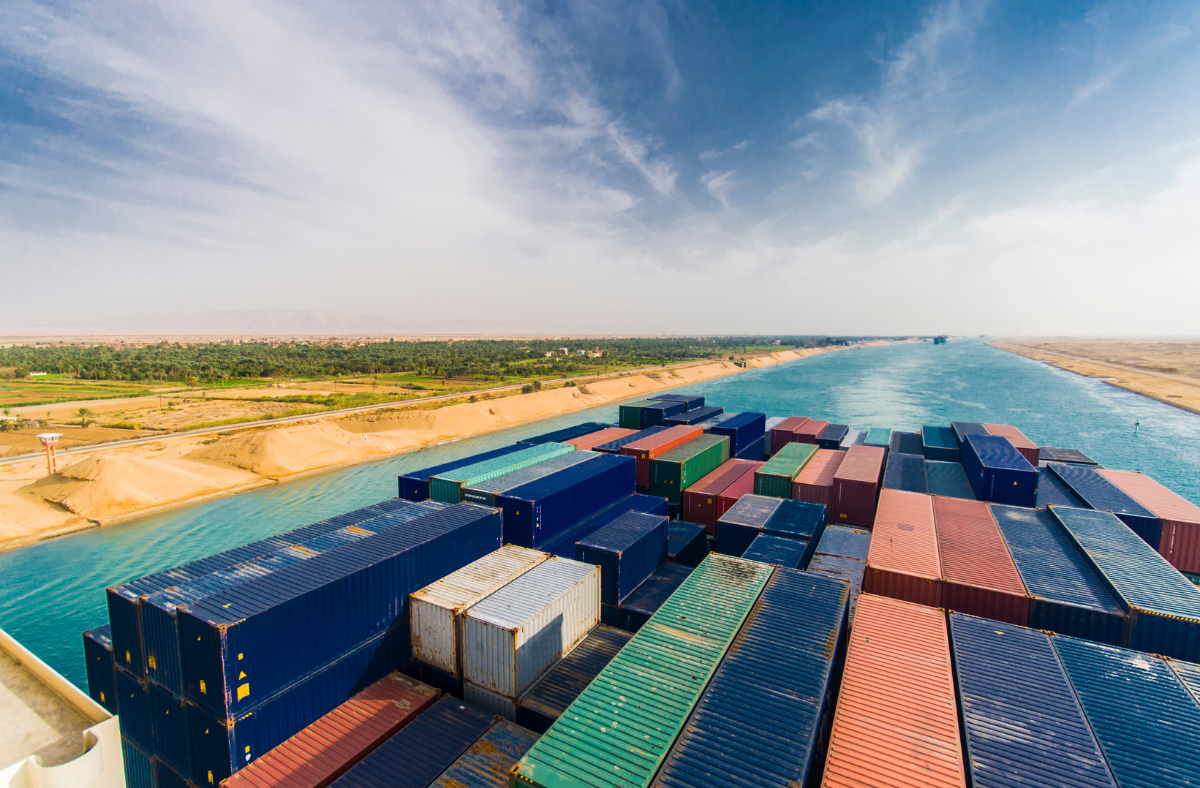In an interconnected world, global trade growth remains the linchpin of the modern economy. Yet, as we head into the last stretch of 2023, we see a mix of progress and challenges. Breakthroughs include the Black Sea’s humanitarian corridor, but disruptions like the drought in the Panama Canal put a damper on growth.
In the aftermath of a global pandemic and with the context of shifting geopolitical landscapes nations struggle with what looks like slowing trade. In this article we examine the current state of global trade, weighing the optimistic strides made against a backdrop of challenges.
Progress in August
First, the good news – it looks like significant progress in global trade growth was made in August, as several factors appear to support broader international trade – according to the WTO’s August 2023 trade report.
For example, Ukraine has initiated a significant move by opening a “humanitarian corridor” in the Black Sea for cargo ships. It’s a marked change when considering the recent collapse of the Black Sea Grain Initiative: Russia’s exit from the grain initiative and its subsequent blockade on Ukraine.
On a broader trade front, the WTO stated in the same report that services trade is witnessing what looks like more robust growth compared to merchandise trade. This difference is particularly accentuated thanks to export restrictions on key goods, including food and fertilizers.
In fact since 2020, there has been a significant increase in export restrictions. For instance, 63 such restrictions are in place for food, feed, and fertilizers.
Last year, the services trade saw a remarkable 15% boost, decisively outperforming the 2.7% growth in merchandise trade.
When combined, the total trade experienced a 13% surge, accumulating to an impressive $31 trillion.
Challenges in many corners
Diving deeper into global trade intricacies, we see a few pinch points – including a reminder of how physical pinch points such as the Suez and the Panama Canal can restrict global trade.
A severe drought at the Panama Canal is causing significant disruptions to global trade. In practice cargo ships have waited for extended periods, sometimes several weeks, to traverse the canal – which delayed cargo significantly, and led to a build-up of vessels.
The Panama Canal Authority (ACP) has had to limit the number of vessels using the canal and impose restrictions on ships’ depth, limiting the cargo they can carry, due to water scarcity. The ongoing drought situation is described as presenting “unprecedented challenges”.
The canal, which connects almost 2,000 ports across 170 countries, is pivotal for international trade, with major traffic from across the globe but in particular countries such as the United States, China, and Japan.
The drought’s impact on the canal emphasizes the increasingly disruptive consequences of the climate crisis on global supply chains.
Trade volume under policy pressure
China, a major player in the world’s economic scenario, registered a sharp decline in both exports, by 14.5%, and imports, by 12.4%, in July. One event that may have contributed is the US decision to curtail its investments in some pivotal Chinese tech sectors.
Also in the East, Japan and Qatar are keenly focused on strengthening their trade ties, but there’s a cloud of uncertainty between Japan and the US due to disagreements over whaling practices.
The changing global climate has also been exerting pressure on trade. Rising temperatures have escalated food prices, with soybeans, olive oil, and rice facing severe shortages.
The emphasis on climate-aligned foreign direct investment (FDI) is now seen arguably at the core of sustainable growth of developing nations.
A noteworthy development from the West is the recent downgrading of the US’s long-term credit rating, which poses intriguing questions about the behemoth economy’s future borrowing and investment capabilities.
IMF comment underlines global concerns
In the aftermath of a global pandemic, the world finds itself grappling with unprecedented challenges. Recent research from the Kansas City Federal Reserve paints a challenging picture of the post-pandemic global economy, highlighting issues like soaring government debt, geopolitical tensions, and an unsettling trajectory for technological innovation.
With the backdrop of geopolitical disruptions like the Russian invasion of Ukraine and escalating U.S.-China tensions, global trade appears to stand at a tough crossroads.
Pierre-Olivier Gourinchas, the International Monetary Fund’s chief economist, underscores the fragility of the current state, noting that countries are drained after battling the pandemic, and that policy-driven forces and decoupling between China and the West add further strain.
The looming danger is a possible stagnation where parts of the world fail to progress, leading to demographic and migration pressures. Economists, including Gourinchas, believe that global growth might stagnate around 3%, a disappointing rate compared to the past where China’s rapid development drove figures above 4%.
Existing trends amplified by COVID-19
The impact of the pandemic amplified certain pre-existing trends. A paper by Serkan Arslanalp of the IMF and Barry Eichengreen from the University of California, Berkeley, reveals a troubling statistic: the ratio of public debt to global economic output surged to 60%.
This was largely driven by pandemic spending by governments. Such unsustainable levels of debt threaten to divert vital resources away from developing nations that have burgeoning populations but lack capital.
Recent geopolitical events, notably the Russian aggression against Ukraine, have also fragmented the longstanding belief that trade fosters lasting international partnerships.
COVID-19 had, of course, a huge impact on global trade flows and arguably became a movement where many participants in global trade decided that near-shoring is also the equivalent of de-risking.
It led to a pattern of nearshoring but World Trade Organization Director-General Ngozi Okonjo-Iweala cautions against the current trend of reordering global production patterns. While diversifying trade might seem appealing, it’s essential to extend opportunities to those nations historically sidelined in the global trade arena.
What does global growth look like?
Global economic growth is a natural driver of trade growth. From an economic standpoint, recent economic projections from the IMF shows global growth decelerating, with projections declining from 3.5% in 2022 to 3.0% for 2023 and 2024.
Although inflation in developed economies shows signs of slowing, trade volumes are down. Manufacturing sectors worldwide are experiencing a slowdown, and while services are expanding, there’s noticeable deceleration.
The ripple effects of the pandemic also extend to the future of work, affecting urban economies. Demand for office spaces in major cities like New York, London, and San Francisco is dwindling, with average office attendance dropping significantly.
In general it could be suggested that global growth is somewhat anemic – and there are also signs that China may not offer much support in the near future.
Debt may continue to weigh on trade
Despite the myriad challenges facing global trade, and an ongoing recession threat, it’s worth considering the resilience shown by key economies. Growth in certain sectors, like the services trade, offer a beacon of hope.
The commitment of nations to navigate these complex issues, combined with the need to diversify and include historically sidelined nations, has the potential to reshape and strengthen global trade patterns for a more inclusive and prosperous future.
For organizations dependent on global trade it therefore depends on the ability to harness opportunities – which, though under pressure, will still be out there to harness.







disqus comments